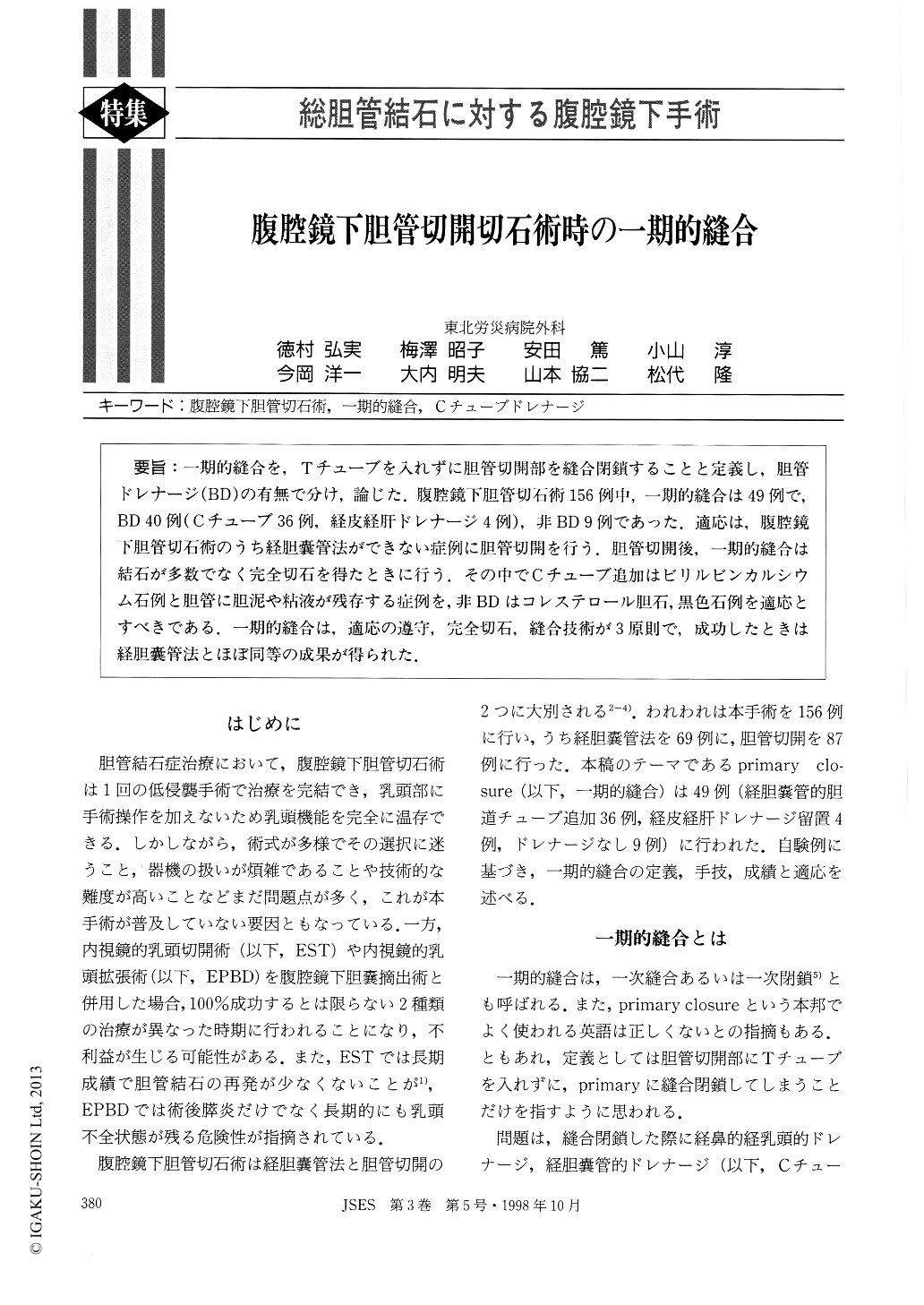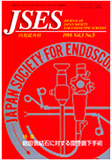Japanese
English
- 有料閲覧
- Abstract 文献概要
- 1ページ目 Look Inside
一期的縫合を,Tチューブを入れずに胆管切開部を縫合閉鎖することと定義し,胆管ドレナージ(BD)の有無で分け,論じた.腹腔鏡下胆管切石術156例中,一期的縫合は49例で,BD40例(Cチューブ36例,経皮経肝ドレナージ4例),非BD9例であった.適応は,腹腔鏡下胆管切石術のうち経胆嚢管法ができない症例に胆管切開を行う.胆管切開後,一期的縫合は結石が多数でなく完全切石を得たときに行う.その中でCチューブ追加はビリルビンカルシウム石例と胆管に胆泥や粘液が残存する症例を,非BDはコレステロール胆石,黒色石例を適応とすべきである.一期的縫合は,適応の遵守,完全切石,縫合技術が3原則で,成功したときは経胆嚢管法とほぼ同等の成果が得られた.
Based on our experience of one hundred fifty six patients undergoing laparoscopic choledocholithotomy, primary ductal closure following laparoscopic choledochotomy was studied in terms of results, indication and techniques. Primary ductal closure was performed in 49 patients. Thirty six of 49 patients had transcys-tic duct drainage, 4 had percutaneous transhepatic drainage and 9 had no biliary drainage. Primary closure with or without biliary drainage had shorter hospitalization than T tube drainage. However the rates of bile leak and recurrent stones were higher without biliary drainage than with drainage.

Copyright © 1998, JAPAN SOCIETY FOR ENDOSCOPIC SURGERY All rights reserved.


